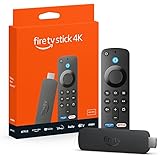INSIGNIA 32-inch Class F20 Series Smart HD 720p Fire TV with Alexa Voice Remote (NS-32F201NA23)
$79.99 (as of February 11, 2025 12:49 GMT +00:00 - More infoProduct prices and availability are accurate as of the date/time indicated and are subject to change. Any price and availability information displayed on [relevant Amazon Site(s), as applicable] at the time of purchase will apply to the purchase of this product.)Amazon Fire TV Stick HD (newest model), free and live TV, Alexa Voice Remote, smart home controls, HD streaming
$24.99 (as of February 12, 2025 12:50 GMT +00:00 - More infoProduct prices and availability are accurate as of the date/time indicated and are subject to change. Any price and availability information displayed on [relevant Amazon Site(s), as applicable] at the time of purchase will apply to the purchase of this product.)Charger for HP Laptop Computer 65W 45W Smart Blue Tip Power Adapter
$9.90 (as of February 12, 2025 12:50 GMT +00:00 - More infoProduct prices and availability are accurate as of the date/time indicated and are subject to change. Any price and availability information displayed on [relevant Amazon Site(s), as applicable] at the time of purchase will apply to the purchase of this product.)65W USB C Laptop Charger Replacement for Lenovo Thinkpad/Yoga/Chromebook, ADLX65YDC2A Lenovo Laptop Charger
$16.99 (as of February 12, 2025 12:50 GMT +00:00 - More infoProduct prices and availability are accurate as of the date/time indicated and are subject to change. Any price and availability information displayed on [relevant Amazon Site(s), as applicable] at the time of purchase will apply to the purchase of this product.)Dell 65W USB-C Laptop Charger for XPS and Latitude 5000 - Power Cord Included
$22.65 (as of February 12, 2025 12:50 GMT +00:00 - More infoProduct prices and availability are accurate as of the date/time indicated and are subject to change. Any price and availability information displayed on [relevant Amazon Site(s), as applicable] at the time of purchase will apply to the purchase of this product.)The Canon EOS M50 Mark II is a significant upgrade to its predecessor, offering improved performance, enhanced features, and better value for money. As a mirrorless camera, it’s designed to appeal to both beginners and experienced photographers who want a compact and versatile device. In this article, we’ll delve into the key improvements, features, and technical specifications of the Canon EOS M50 Mark II.
Design and Build
The Canon EOS M50 Mark II retains its sleek and lightweight design, making it easy to carry around. The camera body is constructed from durable plastic with a magnesium alloy frame, which provides excellent resistance to wear and tear. The ergonomics are comfortable, with intuitive buttons and dials that make it simple to navigate the menu system.
One of the notable changes is the inclusion of a vari-angle touchscreen LCD, which offers greater flexibility for framing shots and reviewing images. The 3-inch display boasts a resolution of 1.04 million dots, providing clear and accurate color representation.
Image Quality
The Canon EOS M50 Mark II features a 24.2-megapixel APS-C CMOS sensor, which delivers excellent image quality with good low-light performance. The DIGIC 8 image processor enables fast autofocus speeds and improved noise reduction, making it suitable for capturing high-quality images in various lighting conditions.
Autofocus
The camera boasts a Dual Pixel AF system, which provides fast and accurate subject tracking. There are 143 phase-detection points available, ensuring that the focus is locked onto your subject quickly and precisely. Canon has also introduced a new Eye Detection AF feature, which allows for precise focus on human eyes.
Video Capabilities
The Canon EOS M50 Mark II is capable of capturing 4K video at 24fps or 30fps, along with Full HD at 60fps. The camera features Dual Pixel CMOS AF during video recording, ensuring smooth and accurate focusing. There’s also a built-in microphone for improved audio quality.
Features and Connectivity
The Canon EOS M50 Mark II includes several notable features, such as:
- Built-in Wi-Fi and Bluetooth connectivity for easy image transfer and remote shooting
- NFC (Near Field Communication) for quick pairing with compatible devices
- Dual SD card slots for expanded storage capacity
- Improved battery life, with up to 305 shots per charge
Technical Specifications:
- Sensor: 24.2-megapixel APS-C CMOS sensor
- Processor: DIGIC 8 image processor
- Autofocus: Dual Pixel AF system with 143 phase-detection points
- Video: 4K at 24fps or 30fps, Full HD at 60fps
- Display: 3-inch vari-angle touchscreen LCD, 1.04 million dots
- Connectivity: Wi-Fi, Bluetooth, NFC, USB-C (with Power Delivery support)
- Battery Life: Up to 305 shots per charge
- Dimensions: 116.3 x 88.1 x 59.2 mm
Comparison with Competitors
The Canon EOS M50 Mark II faces stiff competition from other mirrorless cameras in the market. Some key alternatives include:
- Sony Alpha a6100: Offers similar features and image quality, but with faster autofocus speeds.
- Fujifilm X-T100: Provides excellent image quality and video capabilities, along with a vari-angle touchscreen LCD.
Conclusion
The Canon EOS M50 Mark II is an impressive upgrade to its predecessor, offering improved performance, enhanced features, and better value for money. Its compact design, excellent image quality, and advanced autofocus system make it an attractive option for both beginners and experienced photographers.
While it may not be the best choice for professional-level photography or extreme low-light conditions, the Canon EOS M50 Mark II is a solid choice for those seeking a versatile and feature-packed mirrorless camera. With its competitive pricing starting at $699 (body only), it’s definitely worth considering for those in search of an excellent entry-level to mid-range camera.
Recommendation
The Canon EOS M50 Mark II is recommended for:
- Beginners who want a compact and user-friendly camera
- Travel photographers seeking a lightweight device with good image quality
- Vloggers or content creators who need a reliable camera for social media and YouTube
However, it’s worth considering alternative options if you’re looking for a more advanced camera with faster autofocus speeds or better low-light performance.














